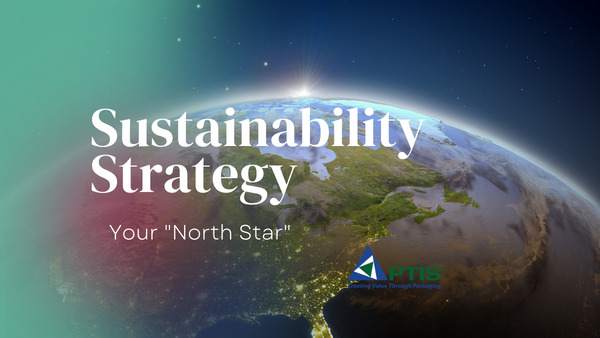A common theme that came out of the recently completed PTIS led Future of Packaging program was that sustainability and circularity are here to stay and will be a driving force in packaging over the upcoming decade. Whether it was biggest opportunities, challenges, top skill sets or most impactful technologies, different elements of sustainability almost invariably held the top spots among packaging thought leaders in our recent global survey. And this is not just something that will impact brand owners – everyone across the entire packaging value chain will be impacted. A sustainability strategy is akin to a company’s “North Star”, guiding the way with long term direction and focus. Like ships that used the North Star for navigation before the onset of newer technologies, there will be clouds that come up and block your view, but that doesn’t mean you give up. You know the general direction you want to go and continually check-in with the North Star to make sure you are on track.
With that in mind, it is imperative that companies plan for the future and ask critical questions:
- Do we have a future-focused sustainability strategy?
- Do we have senior leadership buy-in to really drive the importance of sustainability into the entire company?
- Has our strategy been updated or refreshed in the past 3 year to ensure it aligns with packaging’s future direction?
- Do we have the right assets and skills needed to implement our vision?
- Have we linked in our stakeholders to gain their inputs?
- Do we have a roadmap for how to get to this vision over a 3-to-5-year horizon?
- Does our packaging truly integrate into a circular economy? Can it actually be recycled, composted or reused?
- Are we working with others in the packaging value chain to help shape the “Big Systems” (recovery infrastructure, collection system, composting infrastructure, reuse/sanitizing infrastructure) of the future?
- Do you have appropriate metrics that allow to track and measure progress?
If you answered yes to all these questions, then congratulations, your organization is likely on the right track to a leadership position in the industry and truly looking to advance packaging. If you answer no to a couple of questions, it is likely time to refresh your strategy. And if your organization does not currently have a sustainability strategy, it is not too late, but it is time to develop some long-term objectives and figure how you can get ready for the future. Leveraging foresight is a critical component of any strategy. Foresight is defined in many ways but is often described as “care of provision for the future” or “knowledge or insight gained by or as by looking forward; a view of the future”. The greatest goal scorer in pro hockey history, Wayne Gretzky, used to say, “I skate to where the puck is going, not where it has been.” While any of us would have difficulty replicating the skills of “The Great One”, its sage advice to continue looking forward to where packaging is going and not just following past trends.
By asking the right questions, understanding the future direction of the industry, leveraging new technologies, and collaborating with other leaders, a company can not only help define the direction of their own organization, but be a part of shaping the industry as a whole.
No matter the size or place in the packaging value chain of your organization, having a sustainability strategy is increasingly becoming a “must have” attribute. As leaders take steps to further advance their own packaging objectives and look further down the supply chain at steps like Scope 3 emissions, they will be looking for partners that are prepared and engaged for the future of packaging. Will you be prepared?
Through the Future of Packaging program, the PTIS team truly looks to leverage foresight planning to stay ahead of trends and project where the industry is moving. If you are having trouble finding your “North Star”, please contact the PTIS team to see how we can help get you set on your course.


